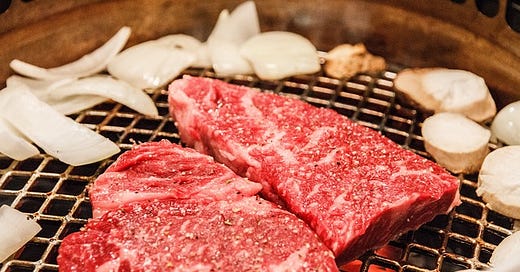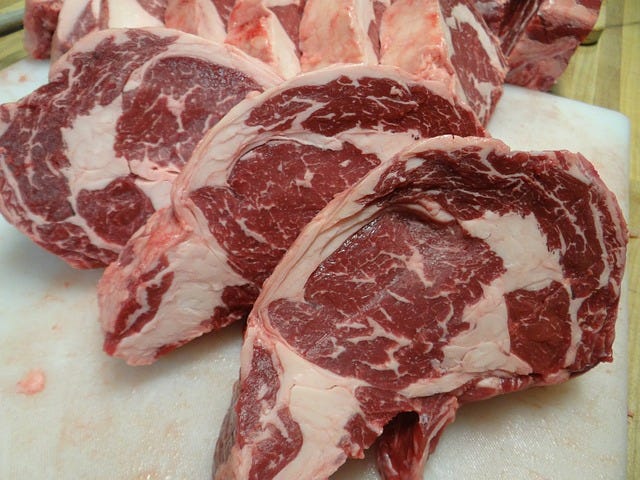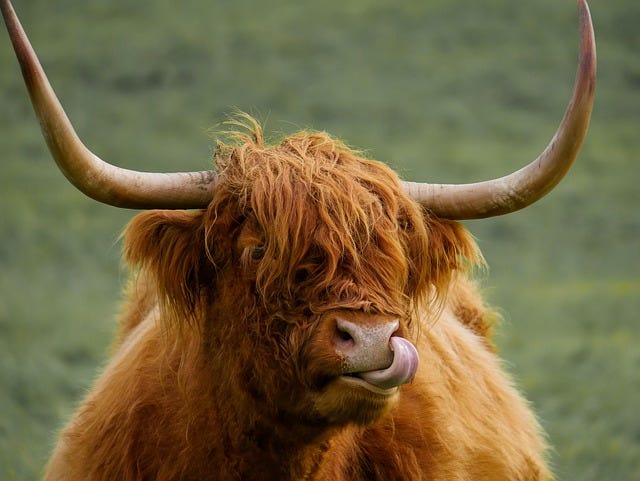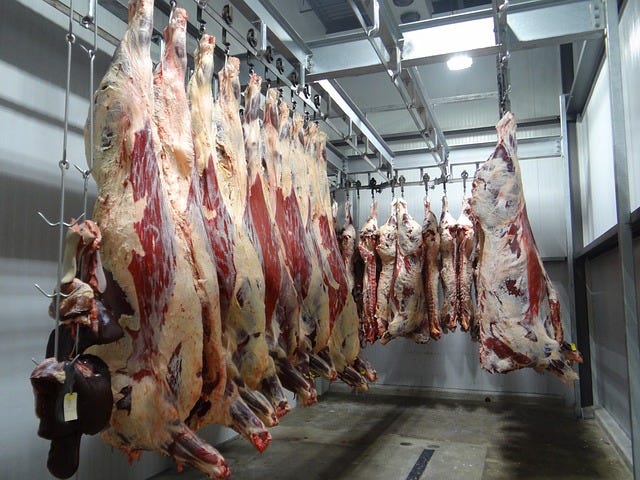Wagyu Beef: The World's Favorite Fat Cow
Wagyu beef is super buttery and tender due to its fat content but are the cows it comes from considered obese or unhealthy?
Wagyu beef is highly prized and renowned for its exceptional marbling, tenderness, and rich flavor. It originates from Japan and is often considered one of the finest and most luxurious types of beef in the world.
At first glance, a freshly cut steak of A5 Wagyu looks like it came from the world’s most unhealthy cow. Is this true, are these cows unhealthy?
The fat-to-lean ratio of these prized Japanese bovines can be as high as almost 30 percent, in ground beef this would be 70/30, which is still very high for ground beef as the most common ratios are between 80/20 and 85/15.
Whole-muscle meat is categorized differently for fat content than their ground-up brothers are. In The United States, meat is graded by the USDA. The grades are as follows:
Prime - Prime is the highest grade for American beef cattle, it generally has between 8-13% of marbled fat content
Choice - Choice is the second highest grade for American beef cattle with a fat content being around 4-10% fat content
Select - Select is usually the lowest grade that you will find in the grocery store, its marbled fat content can be as low as 2-4%
With the fat content of Wagyu beef being substantially higher than that of its American counterpart it’s no wonder that someone would think that these cows are incredibly unhealthy.
Wagyu beef is subject to a more strict grading standard in Japan than our cattle here in The United States. This includes a combination of factors such as marbling, meat color, firmness, and quality of fat. The highest grade Wagyu is A5, with A being the yield grade (amount of usable meat) and 5 representing the highest marbling score.
We should all know by now that the Wagyu beef cows live a very comfortable, docile kind of life. They seem to be taken care of very well, at least the ones living in Japan.
They have a carefully controlled diet and are often fed a combination of forage (grass or hay) and a high-energy grain-based diet, which typically includes corn. The exact feed composition and duration can vary, but the goal is to promote marbling and consistent meat quality.
Wagyu cattle are often raised in low-stress environments. This includes minimizing handling and providing spacious, clean living conditions, who knows, maybe happier cows produce more tasty and tender beef.
There is however a genetic difference between the Japanese cattle known as Wagyu and let’s say the American Angus. The genetics of Wagyu beef cattle have developed in such a way that the animal is genetically pre-disposed to have higher levels of unsaturated fat throughout the muscle, hence the extreme marbling.
In human terms, I guess that you could say that American beef cattle carry their fat differently than Wagyu beef cattle do. Each animal has a similar amount of total fat on the body it’s just that American beef cattle hold most of their fat on the outside of the muscle whereas the Japanese cattle’s fat is spread out through the muscle and not on the outside.
From my perspective, the fat content of a livestock animal is probably not what would make them unhealthy. I think the living conditions of the animal whether your talking about cattle, hogs, lamb, or chickens play a key factor in the animal’s overall health and well-being. I have written a little more about animal welfare in a previous piece called,
Farming Ain't Easy
I’ve always believed that the most important people on the planet are the ones who plant the seeds, and care for the soil where they grow - Willie Nelson As a chef, I have purchased, inspected, and cooked countless pounds of meat, produce, and grains, as well as a plethora of other food products over the years. Yet I have seldom thought of where those pr…
In the culinary world, we sometimes use the terms Wagyu and Kobe interchangeably, but this isn’t exactly right, you could say that all Kobe is Wagyu, but not all Wagyu is Kobe. If you would like to see the exact criteria for Kobe I found a great explanation right here.
Wagyu beef definitely looks and tastes delicious and is highly coveted around the world, but I have to go back to my original question, Are these cows unhealthy? The answer to that appears to be a resounding no, these cows are not considered to be unhealthy or obese.
The opposite seems to be true, with selective breeding, excellent healthcare, and a great diet these animals seem to have a better life than some of their American cousins.
Yes, Wagyu is amazing, and if you get the chance to try it go for it, but don’t take it too seriously, after all, it’s just food, and no matter what you’ve been told, food shouldn’t be pretentious.









Quite Interesting and informative. I think it would be wonderful to try Kobe beef just once. I feel fairly sure I will not be doing that in this lifetime. I was fortunate to grow up on a small farm where we enjoyed eating the beef we raised. I think of those days with fond memories. I remember my dad took pride in carving the meat at our table and knowing how to carve it correctly.
The place I worked at the longest had mostly choice cuts, but added prime grade stuff while I was there, which was a pretty solid upgrade (all Certified Black Angus, too). But wagyu is just on another level.